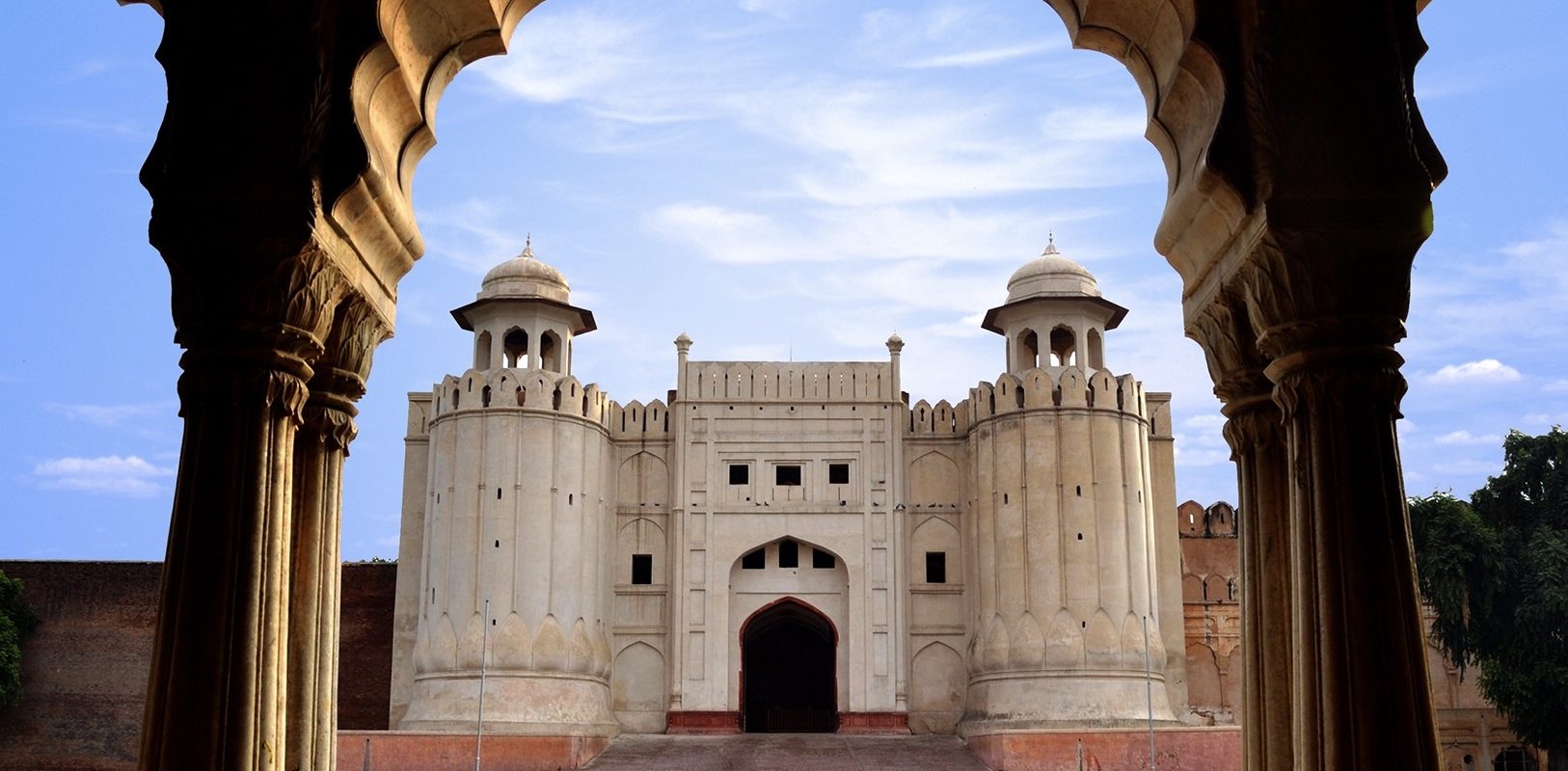
Lahore Fort
The Lahore Fort is a citadel in the city of Lahore in Punjab, Pakistan. The fortress is located at the northern end of Walled city of Lahore and spreads over an area greater than 20 hectares (49 acres). It contains 21 notable monuments, some of which date to the era of Emperor Akbar. The Lahore Fort is notable for having been almost entirely rebuilt in the 17th century, when the Mughal Empire was at the height of its splendor and opulence.
Though the site of the Lahore Fort has been inhabited for millennia, the first record of a fortified structure at the site was regarding an 11th-century mudbrick fort. The foundations of the modern Lahore Fort date to 1566 during the reign of Emperor Akbar, who bestowed the fort with a syncretic architectural style that featured both Islamic and Hindu motifs. Additions from the Shah Jahan period are characterized by luxurious marble with inlaid Persian floral designs, while the fort’s grand and iconic Alamgiri Gate was constructed by the last of the great Mughal emperors, Aurangzeb, and faces the renowned Badshahi Mosque.
After the fall of the Mughal Empire, Lahore Fort was used as the residence of Emperor Ranjit Singh, founder of the Sikh Empire. The Sikhs made several additions to the fort. It then passed to the control of the East India Company after they annexed Punjab following their victory over the Sikhs at the Battle of Gujrat in February 1849. In 1981, the fort was inscribed as a UNESCO World Heritage Site for its “outstanding repertoire” of Mughal monuments dating from the era when the empire was at its artistic and aesthetic zenith.
The present design and structure of the fort trace its origins to 1575 when the Mughal Emperor Akbar occupied the site as a post to guard the northwest frontier of the empire. The strategic location of Lahore, between the Mughal territories and the strongholds of Kabul, Multan, and Kashmir necessitated the dismantling of the old mud-fort and fortification with solid brick masonry. Lofty palaces were built over time, along with lush gardens. Notable Akbar period structures included the Doulat Khana-e-Khas-o-Am, Jharoka-e-Darshan, and Akbari Gate. Many Akbari structures were modified or replaced by subsequent rulers.
Emperor Jahangir first mentions his alterations to the fort in 1612 when describing the Maktab Khana. Jahangir also added the Kala Burj pavilion, which features European-inspired angels on its vaulted ceiling. British visitors to the fort noted Christian iconography during the Jahangir period, with paintings of the Madonna and Jesus found in the fort complex. In 1606, Guru Arjan of the Sikh faith was imprisoned at the fort before his death.
Jahangir bestowed the massive Picture Wall, a 1,450 feet (440 m) by 50 feet (15 m) wall which is exquisitely decorated with a vibrant array of glazed tile, faience mosaics, and frescoes. On the spandrels of the large arched panels below Jahangir’s Khwabgah (the Imperial Bedchamber) are azdahas or winged dragons from ancient Persian mythology, cup-bearing angel figures herons, cranes and other flying birds. Many of the scenes displayed on this ‘Picture Wall’ illustrate the court life of the Mughal sovereigns, their sports and their pastimes. One of the finest panels shows four horsemen playing the noble game of chaughan, nowadays known as polo. Most prominent are those relating to elephant fights, which were one of the favourite recreations of the Mughal court.
The Mosque of Mariyam Zamani Begum was built adjacent to the forts of eastern walls during the reign of Jahangir. While the mosque likely served as a Friday congregational mosque for members of the Royal Court, it was not financed by Jahangir, although it likely required his approval. The foundation of this mosque was laid by the Empress Mariam-uz-Zamani in the year 1611 and the construction was completed on the order of her son Jahangir in her honor.

